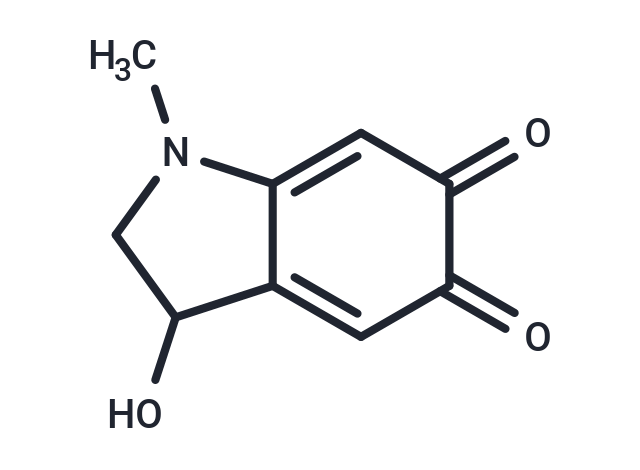Shopping Cart
- Remove All
 Your shopping cart is currently empty
Your shopping cart is currently empty

Adrenochrome (Adraxone) is a cytotoxic molecule that can be used to kill bacteria. Adrenochrome is an oxidized product of Epinephrine. Adrenochrome is a coronary systolic compound that acts on rat hearts and is associated with cardiotoxicity and can be used to determine superoxide dismutase activity. Adrenochrome is a potential psychotropic drug for the study of nervous system diseases.

| Pack Size | Price | Availability | Quantity |
|---|---|---|---|
| 2 mg | $29 | In Stock | |
| 5 mg | $41 | In Stock |
| Description | Adrenochrome (Adraxone) is a cytotoxic molecule that can be used to kill bacteria. Adrenochrome is an oxidized product of Epinephrine. Adrenochrome is a coronary systolic compound that acts on rat hearts and is associated with cardiotoxicity and can be used to determine superoxide dismutase activity. Adrenochrome is a potential psychotropic drug for the study of nervous system diseases. |
| In vitro | Microsomal calcium binding, calcium uptake, and Ca2+-stimulated Mg2+-dependent ATPase activities are reduced in the presence of Adrenochrome. The inhibitory impact of Adrenochrome on microsomal calcium uptake activity of the isolated membrane remains unaffected by various factors, including pH (ranging from 6.0 to 8.0), calcium concentrations (ranging from 10 to 200 μM), protein concentration (ranging from 0.02 to 0.10 mg/mL), temperature (ranging from 25 to 37 degrees C), and incubation time (ranging from 2 to 30 minutes). [1] |
| In vivo | In isolated rat hearts, the administration of Adrenochrome at concentrations ranging from 1 to 1000 ng/mL leads to a dose- and time-dependent elevation in coronary pressure. Moreover, the extent of constriction induced by Adrenochrome is influenced by the concentration of CaCl2 in the perfusion medium. [2] |
| Alias | Adraxone |
| Molecular Weight | 179.17 |
| Formula | C9H9NO3 |
| Cas No. | 54-06-8 |
| Smiles | OC1C=2C(N(C)C1)=CC(=O)C(=O)C2 |
| Relative Density. | 1.2822 g/cm3 (Estimated) |
| Storage | store at low temperature | Powder: -20°C for 3 years | In solvent: -80°C for 1 year | Shipping with blue ice. | |||||||||||||||||||||||||||||||||||
| Solubility Information | DMSO: 90.0 mg/mL (502.3 mM), Sonication is recommended. | |||||||||||||||||||||||||||||||||||
Solution Preparation Table | ||||||||||||||||||||||||||||||||||||
DMSO
| ||||||||||||||||||||||||||||||||||||

Copyright © 2015-2025 TargetMol Chemicals Inc. All Rights Reserved.